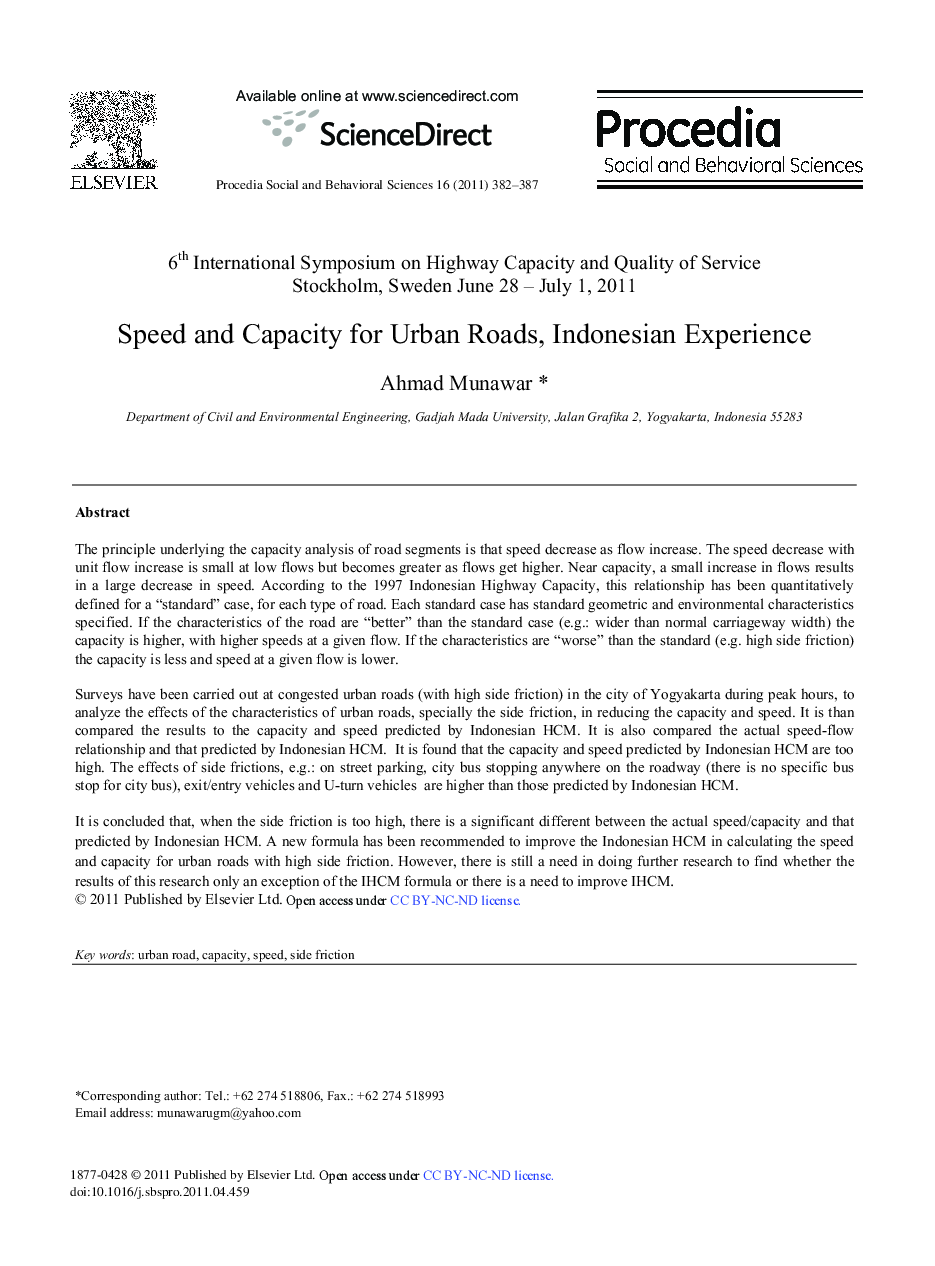| Article ID | Journal | Published Year | Pages | File Type |
|---|---|---|---|---|
| 1124170 | Procedia - Social and Behavioral Sciences | 2011 | 6 Pages |
The principle underlying the capacity analysis of road segments is that speed decrease as flow increase. The speed decrease with unit flow increase is small at low flows but becomes greater as flows get higher. Near capacity, a small increase in flows results in a large decrease in speed. According to the 1997 Indonesian Highway Capacity, this relationship has been quantitatively defined for a “standard” case, for each type of road. Each standard case has standard geometric and environmental characteristics specified. If the characteristics of the road are “better” than the standard case (e.g.: wider than normal carriageway width) the capacity is higher, with higher speeds at a given flow. If the characteristics are “worse” than the standard (e.g. high side friction) the capacity is less and speed at a given flow is lower. Surveys have been carried out at congested urban roads (with high side friction) in the city of Yogyakarta during peak hours, to analyze the effects of the characteristics of urban roads, specially the side friction, in reducing the capacity and speed. It is than compared the results to the capacity and speed predicted by Indonesian HCM. It is also compared the actual speed-flow relationship and that predicted by Indonesian HCM. It is found that the capacity and speed predicted by Indonesian HCM are too high. The effects of side frictions, e.g.: on street parking, city bus stopping anywhere on the roadway (there is no specific bus stop for city bus), exit/entry vehicles and U-turn vehicles are higher than those predicted by Indonesian HCM. It is concluded that, when the side friction is too high, there is a significant different between the actual speed/capacity and that predicted by Indonesian HCM. A new formula has been recommended to improve the Indonesian HCM in calculating the speed and capacity for urban roads with high side friction. However, there is still a need in doing further research to find whether the results of this research only an exception of the IHCM formula or there is a need to improve IHCM.
